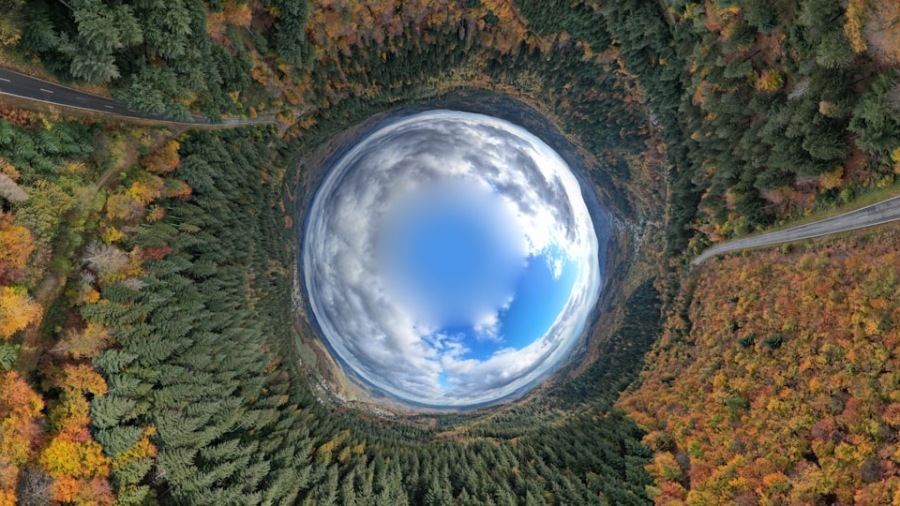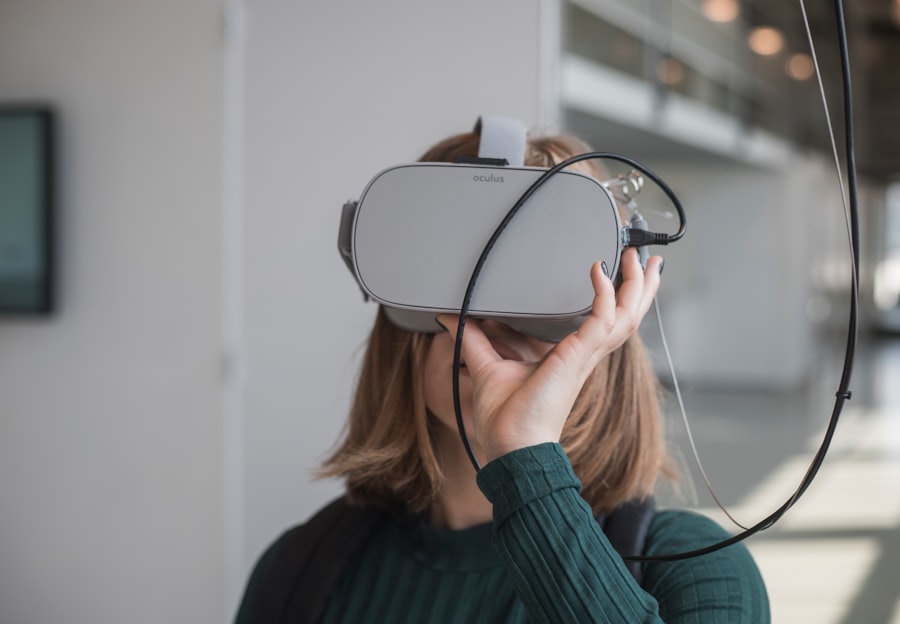In recent years, the real estate industry has experienced a significant increase in the use of 3D visualization as a marketing tool. Advancements in technology have enabled real estate developers and agents to present properties in a more immersive and engaging manner through 3D visualization. This technology allows potential buyers to take virtual tours of properties, providing a realistic and detailed view of the space without the need for physical visits.
The popularity of 3D visualization in real estate marketing has grown due to its ability to offer a more accurate representation of properties. By creating detailed 3D models, real estate professionals can showcase every aspect of a property, including layout, design, and surrounding environment. This level of detail enables potential buyers to better understand the property and its potential, leading to more informed decision-making.
Furthermore, 3D visualization allows for customization and personalization, giving buyers the opportunity to envision how they can adapt the space to their preferences. As a result, this technology has transformed property presentation methods and has become an essential tool for attracting and engaging potential buyers in the real estate market.
Key Takeaways
- 3D visualization is becoming increasingly popular in real estate marketing, allowing for more immersive and interactive property previews.
- Using 3D visualization in real estate offers advantages such as cost savings, time efficiency, and the ability to showcase properties in a more engaging way.
- 3D visualization is improving property previews for buyers by providing a more realistic and detailed representation of the property, helping them make more informed decisions.
- The impact of 3D visualization on property development and design is significant, as it allows for better planning, visualization, and communication among stakeholders.
- 3D visualization plays a crucial role in virtual property tours, offering potential buyers a more immersive and realistic experience of the property without physically visiting it.
Advantages of Using 3D Visualization in Real Estate
Immersive and Engaging Property Showcase
The use of 3D visualization in real estate offers a multitude of advantages for both real estate professionals and potential buyers. One of the key advantages is the ability to showcase properties in a more immersive and engaging way. With 3D visualization, potential buyers can take virtual tours of properties, allowing them to explore every corner and detail of the space without having to physically visit the property.
Accurate and Detailed Property Representations
This not only saves time and effort for both buyers and sellers but also provides a more realistic and detailed view of the property, leading to more informed decision-making. Another advantage of using 3D visualization in real estate is the ability to create accurate and detailed representations of properties. By creating 3D models of properties, real estate professionals can showcase every aspect of the space, from the layout and design to the surrounding environment.
Personalized and Customizable Experience
This level of detail allows potential buyers to get a better sense of the property and its potential, leading to a more immersive and personalized experience. Additionally, 3D visualization allows for customization and personalization, giving buyers the opportunity to visualize how they can make the space their own. As a result, the use of 3D visualization in real estate offers numerous advantages for both sellers and buyers, making it an essential tool for marketing properties in today’s competitive market.
How 3D Visualization is Improving Property Previews for Buyers
The use of 3D visualization in real estate has significantly improved property previews for buyers by providing a more immersive and realistic experience. With 3D visualization, potential buyers can take virtual tours of properties, allowing them to explore every corner and detail of the space without having to physically visit the property. This not only saves time and effort for buyers but also provides a more realistic and detailed view of the property, leading to more informed decision-making.
Additionally, 3D visualization allows for customization and personalization, giving buyers the opportunity to visualize how they can make the space their own, further enhancing their experience. Furthermore, 3D visualization has improved property previews for buyers by providing accurate and detailed representations of properties. By creating 3D models of properties, real estate professionals can showcase every aspect of the space, from the layout and design to the surrounding environment.
This level of detail allows potential buyers to get a better sense of the property and its potential, leading to a more immersive and personalized experience. As a result, 3D visualization has revolutionized property previews for buyers by providing a more engaging and informative way to explore properties, ultimately leading to more confident and informed decision-making.
The Impact of 3D Visualization on Property Development and Design
The impact of 3D visualization on property development and design has been profound, revolutionizing the way properties are conceptualized and presented. With 3D visualization, real estate developers are able to create accurate and detailed representations of properties, allowing them to showcase every aspect of the space, from the layout and design to the surrounding environment. This level of detail not only enhances the presentation of properties but also provides valuable insights for developers in terms of design and functionality.
Additionally, 3D visualization has had a significant impact on property development by allowing developers to visualize and experiment with different design concepts and layouts. By creating 3D models of properties, developers can explore various design options and make informed decisions about the development process. This level of flexibility and creativity has led to more innovative and functional property designs, ultimately enhancing the overall quality of properties.
As a result, the impact of 3D visualization on property development and design has been transformative, providing developers with valuable tools for creating and presenting properties in a more engaging and effective way.
The Role of 3D Visualization in Virtual Property Tours
The role of 3D visualization in virtual property tours has become increasingly important in today’s real estate market. With 3D visualization, potential buyers can take virtual tours of properties, allowing them to explore every corner and detail of the space without having to physically visit the property. This not only saves time and effort for both buyers and sellers but also provides a more realistic and detailed view of the property, leading to more informed decision-making.
Additionally, 3D visualization allows for customization and personalization, giving buyers the opportunity to visualize how they can make the space their own, further enhancing their experience during virtual property tours. Furthermore, 3D visualization plays a crucial role in virtual property tours by providing an immersive and engaging experience for potential buyers. By creating accurate and detailed representations of properties, real estate professionals are able to showcase every aspect of the space, from the layout and design to the surrounding environment.
This level of detail not only enhances the virtual tour experience but also provides potential buyers with a more realistic sense of the property, ultimately leading to more confident decision-making. As a result, the role of 3D visualization in virtual property tours has become essential in today’s real estate market, providing a more immersive and informative way for buyers to explore properties.
3D Visualization as a Tool for Effective Property Advertising
3D visualization has become an indispensable tool for effective property advertising in today’s competitive real estate market. By creating accurate and detailed representations of properties, real estate professionals are able to showcase every aspect of the space, from the layout and design to the surrounding environment. This level of detail not only enhances the presentation of properties but also provides potential buyers with a more realistic sense of the property, ultimately leading to more informed decision-making.
Additionally, 3D visualization allows for customization and personalization in property advertising, giving potential buyers the opportunity to visualize how they can make the space their own. This level of personalization not only engages potential buyers but also creates a more emotional connection to the property, ultimately leading to more successful advertising campaigns. As a result, 3D visualization has become an essential tool for effective property advertising, providing real estate professionals with valuable resources for showcasing properties in a more engaging and informative way.
The Future of 3D Visualization in Real Estate Marketing
The future of 3D visualization in real estate marketing is promising, with continued advancements in technology driving its evolution as an essential tool for showcasing properties. As technology continues to improve, we can expect even more realistic and immersive 3D visualizations that provide potential buyers with an unparalleled experience when exploring properties. Additionally, as virtual reality (VR) and augmented reality (AR) technologies continue to develop, we can anticipate even more interactive and engaging ways for potential buyers to experience properties through 3D visualization.
Furthermore, as 3D visualization becomes more accessible and cost-effective, we can expect its widespread adoption across all sectors of the real estate industry. From residential properties to commercial developments, 3D visualization will become a standard tool for marketing properties in an increasingly competitive market. As a result, the future of 3D visualization in real estate marketing is bright, with continued advancements in technology driving its evolution as an indispensable tool for showcasing properties in a more immersive and engaging way.
In the realm of real estate marketing, 3D visualization has become a game-changer, offering potential buyers a detailed and immersive view of properties. If you’re interested in exploring more cutting-edge tools that are transforming other industries, you might want to read about the Rankatom keyword research tool. This tool is revolutionizing how digital marketing professionals optimize their content to reach wider audiences effectively. Learn more about this innovative tool by visiting Rankatom Review: The Game-Changing Keyword Research Tool.
FAQs
What is 3D visualization in real estate marketing?
3D visualization in real estate marketing refers to the use of computer-generated imagery to create lifelike representations of properties. This technology allows potential buyers to virtually tour a property and visualize the space in a realistic manner.
How is 3D visualization enhancing real estate marketing?
3D visualization is enhancing real estate marketing by providing a more immersive and interactive experience for potential buyers. It allows them to explore properties in detail from the comfort of their own homes, saving time and effort for both buyers and real estate agents.
What are the benefits of using 3D visualization in real estate marketing?
Some benefits of using 3D visualization in real estate marketing include increased engagement from potential buyers, the ability to showcase properties in a more compelling and realistic manner, and the potential to attract a wider audience of prospective buyers.
How does 3D visualization impact the real estate industry?
3D visualization is impacting the real estate industry by revolutionizing the way properties are marketed and showcased. It is helping real estate professionals differentiate their listings, attract more qualified leads, and ultimately close sales more efficiently.
What are some common tools and technologies used for 3D visualization in real estate marketing?
Common tools and technologies used for 3D visualization in real estate marketing include virtual reality (VR) headsets, 3D modeling software, and interactive virtual tour platforms. These tools allow for the creation of immersive and engaging experiences for potential buyers.



